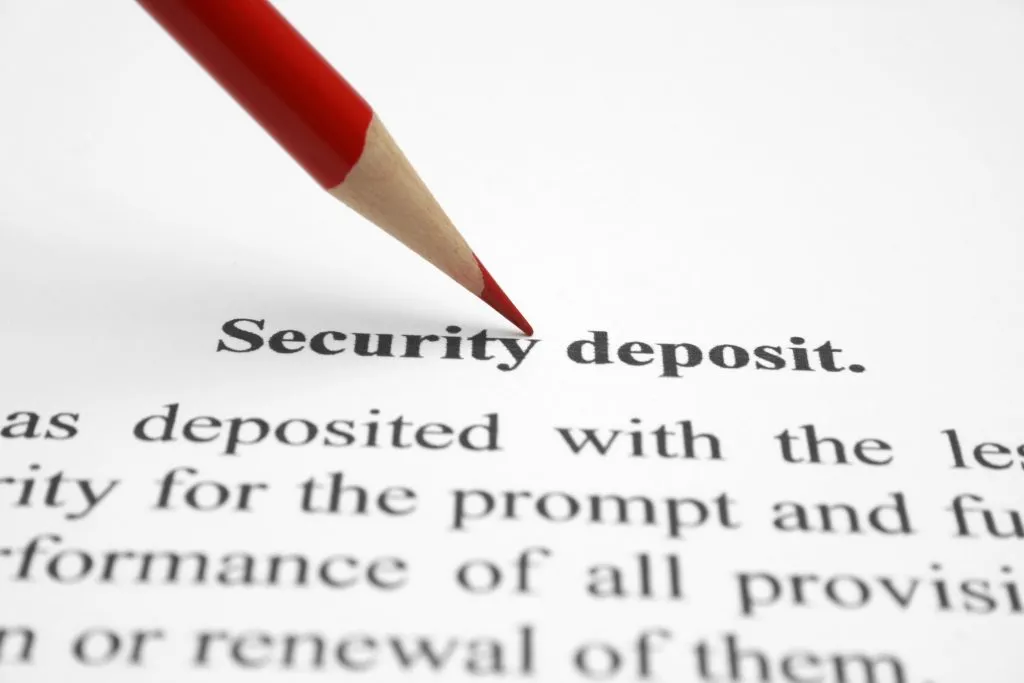Returning a Security Deposit

Alycia Lucio
February 20, 2020
4 min read
In this article:
- What is a security deposit return letter?
- What should you include in a security deposit return letter?
- What can a landlord deduct from a security deposit?
- When should you return security deposit interest?
- Free security deposit return letter
The amount of time a landlord has to return a security deposit to a departing tenant depends on the state. Security deposit returns generally range from a couple of weeks to more than a month, and the countdown to refund the deposit usually starts after the tenant has moved out.
You’ll want to inspect the property as soon as you can and document any reason for withholding funds in a security deposit return letter. Don’t wait until the last minute. If you’re unprepared, you may get stuck with a property damage bill or run into issues like security deposit disputes and delayed move-in times for new tenants.
Note: This guide is for informational purposes only. Zillow Group, Inc. does not make any guarantees about the sufficiency of the information in or linked to from this guide, or that it’s compliant with current, applicable, or local laws. Landlord-tenant laws change rapidly and may be regulated at the federal, state, and local levels. This resource is not a substitute for the advice or service of an attorney; you should not rely on this resource for any purpose without consulting with a licensed attorney in your jurisdiction.
What is a security deposit return letter?
A security deposit return letter is provided by the landlord when a tenant moves out. It documents the amount of the security deposit that is being refunded and itemizes all funds used to cover damages or repairs for which the tenant is responsible. It’s basically a detailed receipt. Many states require that the landlord provide a security deposit return letter before taking any portion of a tenant’s security deposit.
What should you include in a security deposit return letter?
Many states require an itemized list of causes for withholding security deposit funds, but even if your local laws don’t require that, it’s still a good practice to itemize deductions in a security deposit return letter. The tenant can dispute your reason for withholding part of their deposit, and if you don’t have documentation — and receipts — you could be held liable for the funds.
Your itemized security deposit deduction letter should include:
- A sentence noting that a financial statement of deductions is attached
- The amount of each deduction
- An explanation of each deduction
- The total amount of the deductions
- Copies of any repair and cleaning bills
- Either an attached check for the amount owed to the tenant or a request for the tenant to pay the amount due
What can a landlord deduct from a security deposit?
Your lease should clearly specify the situations that would allow you, as the landlord, to keep all or part of the security deposit. Some state laws outline reasons why a landlord might withhold funds from a security deposit, but your lease should still be clear on what can be deducted to avoid disputes or legal proceedings.
Some common security deposit deductions that you may want to consider adding to your lease include:
- Recovering past-due rent
- Damage to the property
- Damage that exceeds normal wear and tear
- Removal of abandoned property
- A penalty for early termination of the lease
- Unpaid utilities
What is considered normal wear and tear?
Renters are not responsible for normal wear and tear, meaning damage that results from everyday use may not be deductible from a security deposit. This includes:
- Light stains, markings and wear on the carpet due to regular use
- Paint or wallpaper that has been faded by sunlight
- Scuffed walls that can be easily cleaned or touched up
- Pin and nail holes in walls (as long as they’re not excessive)
- Broken plumbing caused by normal use
- Dirty blinds or curtains
- Dirt, dust and grime (that is not excessive)
- Warping of doors or floorboards due to age, temperature or moisture
- Appliances or hardware that have broken as a result of age
- Broken lightbulbs
Pro tip: Use our rental walkthrough checklist to inspect the property or unit when tenants move in and move out so both you and your tenant have a record of the rental’s condition. After you’ve documented any damage and determined the cost of repairs, you can fill out a security deposit return letter to accompany the rental deposit return.
When should you return security deposit interest?
Depending on the type of account the security deposit is held in (which your local laws may require to be an escrow type of account), the security deposit may accrue interest. Some states require you to return the security deposit interest that accrues, while others require it only after a certain length of tenancy — and some don’t specify whether the interest must be returned. Check your state and local statutes or consult a local attorney to be certain of the regulations on security deposit interest.
Free security deposit return letter
Use our security deposit return letter as a receipt for the refunded portion of a tenant’s security deposit.
Check out this preview of our template and then download the full security deposit return letter as a PDF.

For more articles, tips and trends about being a landlord and managing properties, visit our Rentals Resource Center.
Create or manage your listings
Post your listing quickly and easily! Your listing will appear on Zillow, Trulia and Hotpads.
Create listingCreate or manage your listings
Post your listing quickly and easily! Your listing will appear on Zillow, Turulia and Hotpads.
Legal
Create listing